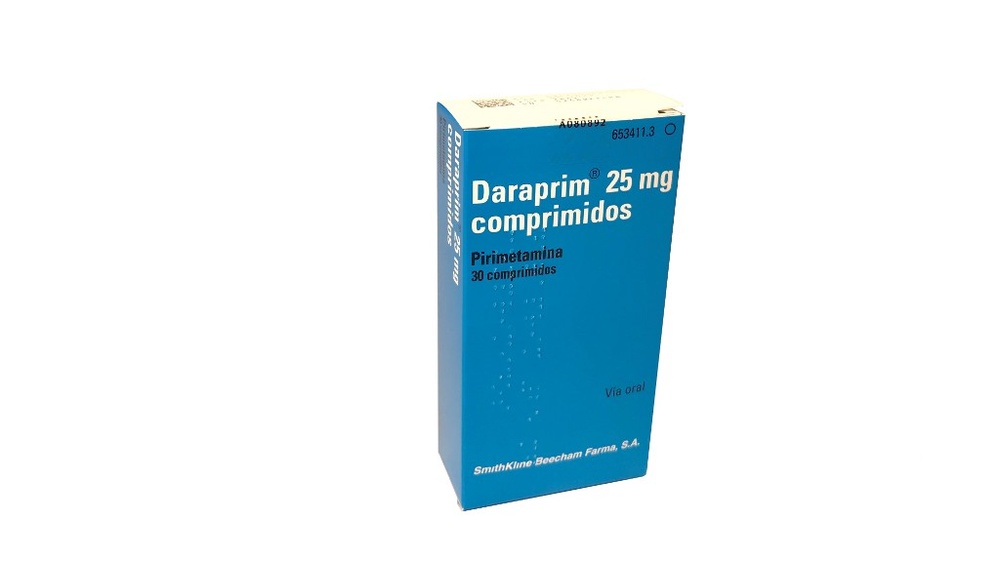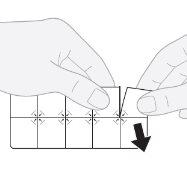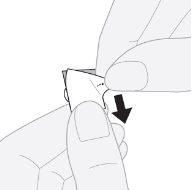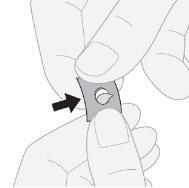

ДАРАПРИМ 25 мг ТАБЛЕТКИ

Запитайте лікаря про рецепт на ДАРАПРИМ 25 мг ТАБЛЕТКИ

Інструкція із застосування ДАРАПРИМ 25 мг ТАБЛЕТКИ
Введення
Опис: інформація для користувача
Daraprim 25 мг таблетки
Піриметамін
Прочитайте уважно весь опис перед тим, як почати приймати цей препарат, оскільки він містить важливу інформацію для вас.
- Збережіть цей опис, оскільки вам може знадобитися знову його прочитати. Якщо у вас виникнуть питання, проконсультуйтеся з вашим лікарем або фармацевтом.
- Цей препарат призначений тільки для вас, і не слід давати його іншим людям, навіть якщо вони мають такі самі симптоми, як у вас, оскільки це може їм нашкодити.
- Якщо ви відчуваєте побічні ефекти, проконсультуйтеся з вашим лікарем або фармацевтом, навіть якщо це побічні ефекти, які не вказані в цьому описі. Див. розділ 4.
Зміст опису
- Що таке Daraprim і для чого він використовується
- Що вам потрібно знати перед тим, як почати приймати Daraprim
- Як приймати Daraprim
- Можливі побічні ефекти
- Збереження Daraprim
- Зміст упаковки та додаткова інформація
1. Що таке Daraprim і для чого він використовується
Daraprim містить піриметамін, який належить до групи лікарських засобів, званих антипалудними засобами. Він показаний для лікування неускладненої малярії, викликаної чутливими штамами Plasmodium falciparum, у дорослих і дітей.
Daraprim у поєднанні з сульфамідом показаний для лікування вродженої та набутої токсоплазмозу.
Піриметамін не слід використовувати як монотерапію при лікуванні малярії та токсоплазмозу.
2. Що вам потрібно знати перед тим, як почати приймати Daraprim
Не приймайте Daraprim
- якщо ви алергічні на активну речовину або на будь-який інший компонент цього препарату, перелічений у розділі 6.
Попередження та обережність
- якщо у вас є анемія типу мегалобластної анемії або симптоми недоїдання, оскільки піриметамін може посилити нестачу фолатів, пов'язану з цією анемією. Відповідно до цього, ці особи повинні отримувати додаток фолінової кислоти
- якщо у вас є історія судом, оскільки ці пацієнти повинні уникати високих початкових доз піриметаміну.
Коли піриметамін вводиться з сульфонамідом, слід враховувати загальні попередження, що застосовуються до сульфонамідів, у будь-якому випадку слід забезпечити адекватне споживання рідини для мінімізації ризику кристалурії.
Використання Daraprim з іншими лікарськими засобами
Повідомте вашому лікареві або фармацевту, якщо ви використовуєте, нещодавно використовували або можете використовувати будь-який інший лікарський засіб.
Особливо піриметамін може змінити дію наступних лікарських засобів: антибіотиків, таких як котримоксазол або триметоприм, антипалудних засобів, таких як прогуаніл, антивіральних засобів, таких як зідовудин, або цитостатичних агентів (наприклад, метотрексат). Одночасне введення з комбінацією триметоприм/сульфамід може призвести до розвитку мегалобластної анемії.
Одночасне введення лоразепаму (бензодіазепіну) та піриметаміну може викликати легке ушкодження печінки.
Відомі випадки повної або часткової зникнення клітин, які зустрічаються в нормальних умовах в кістковому мозку (letalної аплазії кісткового мозку), пов'язані з введенням антибіотика даунорубіцину та піриметаміну у осіб, які страждають на певний тип лейкозу, відомий як гострий мієлоїдний лейкоз.
Солі антикислот та агент проти діареї каолін зменшують абсорбцію піриметаміну.
Піриметамін може впливати на ефективність або токсичність лікарських засобів, таких як антималярійний або антипалудний хінін або антикоагулянти, такі як варфарин, якщо вони вводяться одночасно.
Вагітність, лактація та фертильність
Якщо ви вагітні або перебуваєте в період лактації, вважаєте, що можете бути вагітною або маєте намір завагітніти, проконсультуйтеся з вашим лікарем або фармацевтом перед тим, як використовувати цей препарат.
Daraprim рекомендується тільки у складі комбінованої терапії з сульфамідом під час другого та третього триместру вагітності. У першому триместрі рекомендується альтернативна терапія.
Рекомендується одночасне введення фолінової кислоти, якщо Daraprim вводиться під час вагітності.
Піриметамін проникає в грудне молоко, тому не рекомендується його використання під час лактації, якщо тільки ваш лікар не вважає це необхідним.
Відновлення та використання машин
Не спостерігалося, щоб Daraprim впливав на здатність керувати транспортними засобами та використовувати машини.
Daraprim 25 мг таблетки містить лактозу та натрій
Цей препарат містить лактозу. Якщо ваш лікар сказав вам, що у вас є непереносимість певних цукрів, проконсультуйтеся з ним перед тим, як приймати цей препарат.
Цей препарат містить менше 23 мг натрію (1 ммоль) на таблетку; тобто, він практично не містить натрію.
3. Як приймати Daraprim
Слідуйте точно інструкціям щодо застосування цього препарату, вказаним вашим лікарем або фармацевтом. У разі сумнівів проконсультуйтеся знову з вашим лікарем або фармацевтом.
Пам'ятайте приймати свій препарат.
Ваш лікар призначить вам, чи потрібно збільшити або зменшити дозу препарату під час періоду лікування, а також тривалість лікування.
Daraprim - це таблетки для перорального застосування. Їх слід приймати вранці або ввечері, з або без їжі. Таблетки слід ковтати цілими, не розжовуючи, з допомогою невеликої кількості рідини (склянки води).
Усі пацієнти, які приймають піриметамін, повинні отримувати додаток фолінової кислоти для зменшення ризику ураження кісткового мозку.
Лікування малярії:
Daraprim слід приймати в одній дозі одночасно з сульфадіазином та іншим антипалудним засобом.
Дорослі:
Одна доза двох-трьох таблеток Daraprim (50-75 мг піриметаміну), разом з 1000 мг-1500 мг сульфадіазину.
Загалом, слід приймати вищу дозу для дорослих з вагою понад 60 кг.
Використання у дітей:
Піриметамін можна використовувати перорально з сульфадоксином/сульфадіазином у дітей від 2 місяців.
Рекомендується наступна посологія на основі ваги тіла:
- Діти вагою 5-10 кг: 12,5 мг піриметаміну в одній дозі.
- Діти вагою 11-20 кг: 25 мг піриметаміну в одній дозі.
- Діти вагою 21-30 кг: 37,5 мг піриметаміну в одній дозі.
- Діти вагою 31-45 кг: 50 мг піриметаміну в одній дозі.
- Діти вагою понад 45 кг: використовувати таку саму дозу, як для дорослих.
Використання у пацієнтів похилого віку:
Немає інформації про вплив Daraprim на пацієнтів похилого віку. На рекомендуаних дозах для малярії не ймовірно, що піриметамін матиме побічні ефекти у осіб похилого віку.
Лікування токсоплазмозу
Daraprim слід приймати одночасно з сульфадіазином або кліндаміцином. Використання альтернативного сульфонаміду може потребувати корекції дози.
Дорослі з нормальним імунітетом:
Піриметамін: Початкова доза чотирьох таблеток (100 мг піриметаміну), після чого одна-дві таблетки на день (25-50 мг на день піриметаміну).
Дорослі з ослабленим імунітетом:
- < 60 кг: піриметамін 200 мг перорально як початкова доза, продовжувати з 50 мг на день.
- ≥ 60 кг: піриметамін 200 мг перорально як початкова доза, після чого 75 мг на день.
Пізніше слід призначити схему профілактичного лікування.
Використання у дітей
При лікуванні токсоплазмозу рекомендується наступна посологія:
- Діти молодше 3 місяців (вроджений токсоплазмоз): для лікування вродженого токсоплазмозу рекомендується, щоб новонароджені отримували піриметамін 2 мг/кг/добу протягом 2 днів; 1 мг/кг/добу протягом 2-6 місяців, і після цього 1 мг/кг/добу тричі на тиждень до завершення 12 місяців лікування.
- Діти від 3 до 9 місяців: 6,25 мг піриметаміну на день разом з сульфадіазином: 100 мг/кг ваги тіла (максимально 1 г) на день у чотири дози.
- Діти від 10 місяців до 2 років: 1 мг/кг ваги тіла на день піриметаміну разом з 150 мг/кг ваги тіла сульфадіазину (максимально 1,5 г) на день у чотири дози.
- Діти від 3 до 6 років: початкова доза піриметаміну 2 мг/кг ваги тіла (до максимальної дози 50 мг), після чого 1 мг/кг/добу (максимальна доза 25 мг); разом з 150 мг/кг ваги тіла сульфадіазину (максимально 2 г) на день у чотири дози.
- Діти старше 6 років: так само, як для дорослих.
У дітей з ослабленим імунітетом не визначені схеми посології. Як загальна рекомендація, слід слідувати схемам, вказаним для дітей з токсоплазмозом.
Використання у пацієнтів похилого віку:
Немає інформації про вплив Daraprim на пацієнтів похилого віку. Теоретично можливо, що ці пацієнти під час лікування токсоплазмозу можуть бути більш чутливими до ураження кісткового мозку, викликаного дефіцитом фолатів, пов'язаним з щоденним прийманням Daraprim.
Використання під час вагітності:
25 мг на день до пологів.
Якщо ви прийняли більше Daraprim, ніж потрібно
Якщо ви прийняли більше Daraprim, ніж потрібно, негайно проконсультуйтеся з вашим лікарем або фармацевтом. Найбільш часті симптоми при гострій передозуванні: блювота та судоми. Також можуть виникнути атаксія, тремор та депресія дихання.
У разі передозування або випадкового приймання проконсультуйтеся негайно з вашим лікарем або фармацевтом або зверніться до служби токсикологічної інформації за телефоном 91 562 04 20, вказавши назву препарату та кількість, прийняту.
Якщо ви забули прийняти Daraprim
Не приймайте подвійну дозу для компенсації пропущених доз. Приймайте наступну дозу, коли це потрібно.
Якщо у вас є будь-які інші питання щодо використання цього препарату, проконсультуйтеся з вашим лікарем або фармацевтом.
4. Можливі побічні ефекти
Як і всі лікарські засоби, цей препарат може викликати побічні ефекти, хоча не всі люди їх відчувають.
Симптоми, на які слід звернути увагу
Ураження кісткового мозку(порушення функції кісткового мозку щодо виробництва клітин крові)
Це збільшує ризик кровотечі та зменшує вашу здатність боротися з інфекціями. Симптоми включають:
- кровотечі або синяки без пояснення
- лихоманка
- боль у горлі
- виразки в роті
- надмірна блідість або слабкість
Повідомте вашому лікареві якнайшвидше якщо ви маєте будь-які з цих симптомів - чи то вперше, чи якщо вони погіршуються.
Побічні ефекти, спостережені під час лікування, класифікуються за їхньою частотою появи в: дуже часті (можуть виникнути у понад 1 з 10 осіб), часті (можуть виникнути у до 1 з 10 осіб), рідкі (можуть виникнути у до 1 з 100 осіб), дуже рідкі (можуть виникнути у до 1 з 1000 осіб), надзвичайно рідкі (можуть виникнути у до 1 з 10 000 осіб):
Дуже часті побічні ефекти
Можуть виникнути у більше 1 з 10пацієнтів:
- головні болі
- блювота, нудота, діарея
- виразка на шкірі
Дуже часті побічні ефекти, які можуть виникнути під час аналізу крові:
- анемія (зниження кількості червоних кров'яних тілець)
Часті побічні ефекти
Можуть виникнути у до 1 з 10пацієнтів:
- вертIGO
Часті побічні ефекти, які можуть виникнути під час аналізу крові, включають:
- лейкопенія (зниження кількості білих кров'яних тілець)
- тромбоцитопенія (зниження кількості тромбоцитів)
Терапевтичні добові дози піриметаміну можуть викликати депресію гематопоезу (утворення клітин крові) у 25-50% пацієнтів. Імовірність викликання лейкопенії, анемії або тромбоцитопенії зменшується при одночасному введенні фолінової кислоти.
Рідкі побічні ефекти
Можуть виникнути у до 1 з 100пацієнтів:
- лихоманка
- анормальна пігментація шкіри
Надзвичайно рідкі побічні ефекти
Можуть виникнути у до 1 з 10 000пацієнтів:
- коліки
- судоми
Судоми спостерігалися переважно у пацієнтів, які лікувалися від токсоплазмозу
- виразки в роті
- пневмонія з клітинною інфільтрацією та еозінофілією
Спостерігалося при введенні піриметаміну один раз на тиждень у поєднанні з сульфадоксином
- дерматит.
Надзвичайно рідкі побічні ефекти, які можуть виникнути під час аналізу крові, включають:
- панцитопенія (зниження кількості всіх типів клітин крові)
Панцитопенія, пов'язана з фолатами, спостерігалася у пацієнтів з ймовірним дефіцитом фолатів. Відомі випадки смерті внаслідок відсутності лікування фолатами.
Якщо ви вважаєте, що будь-який з побічних ефектів, які ви відчуваєте, є серйозним, або якщо ви помітили будь-який побічний ефект, не вказаний в цьому описі, повідомте вашому лікареві або фармацевту.
Звітність про побічні ефекти
Якщо ви відчуваєте будь-який тип побічного ефекту, проконсультуйтеся з вашим лікарем або фармацевтом, навіть якщо це можливі побічні ефекти, які не вказані в цьому описі. Ви також можете повідомити про них безпосередньо через систему моніторингу лікарських засобів для людини: http://www.notificaRAM.es. Надсилаючи повідомлення про побічні ефекти, ви можете допомогти забезпечити більш повну інформацію про безпеку цього препарату.
5. Збереження Daraprim
Тримайте цей препарат поза зоною досяжності дітей.
Не зберігайте при температурі вище 25°C. Тримайте захищеним від світла.
Не використовувати цей препарат після закінчення терміну придатності (CAD), який вказаний на упаковці. Термін придатності - останній день місяця, який вказаний.
Лікарські засоби не слід викидати в каналізацію або сміттєві контейнери. Відкладайте упаковки та лікарські засоби, які вам не потрібні, в спеціальний контейнер для відходів у аптеці. У разі сумнівів проконсультуйтеся з вашим фармацевтом щодо того, як позбутися упаковок та лікарських засобів, які вам не потрібні. Це допоможе захистити навколишнє середовище.
6. Зміст упаковки та додаткова інформація
Склад Daraprim
- Активна речовина - піриметамін. Кожна таблетка містить 25 мг піриметаміну.
- Інші компоненти (експіцієнти) - лактоза моногідрат, кукурудзяний крохмаль, гідролізований кукурудзяний крохмаль, дocusат натрію та стеарат магнію.
Вигляд продукту та вміст упаковки
Daraprim - це білі, двовигнуті, з рискою та гравіюванням з ідентифікаційним кодом таблетки. Вони випускаються в упаковках по 30 таблеток.
Власник реєстраційного посвідчення та відповідальний за виробництво
Власник реєстраційного посвідчення
SmithKline Beecham Farma, S.A.
P.T.M. C/ Severo Ochoa, 2
28760 Tres Cantos (Мадрид)
Тел: +34 900 202 700
Відповідальний за виробництво
GlaxoSmithKline Trading Services Limited
12 Riverwalk
Citywest Business Campus
Dublín 24
Ірландія
Дата останньої ревізії цього опису:жовтень 2020 р.
Детальна інформація про цей препарат доступна на сайті Іспанського агентства з лікарських засобів та медичних продуктів (AEMPS) http://www.aemps.gob.es/
Daraprim випускається в блистерах, що перешкоджають доступу дітей.
Як вийняти таблетку
- Відокремити таблетку: потягнути уздовж лінії попереднього розрізу, щоб відокремити одну комірку від блистера.

- Видалити зовнішню обгортку: почавши з кута, підняти та видалити зовнішню обгортку з комірки.

- Натиснути, щоб вийняти таблетку: натиснути з одного боку таблетки, щоб вийняти її з алюмінієвої фольги.


Скільки коштує ДАРАПРИМ 25 мг ТАБЛЕТКИ в Іспанії у 2025 році?
ДАРАПРИМ 25 мг ТАБЛЕТКИ коштує в середньому 4.9 євро у грудень, 2025 році. Ціна може змінюватися залежно від регіону, аптеки та наявності рецепта. Рекомендуємо перевіряти актуальну вартість у місцевих аптеках або через онлайн-сервіси.
- Країна реєстрації
- Середня ціна в аптеках4.9 EUR
- Діючі речовини
- Потрібен рецептТак
- Виробник
- Інформація є довідковою і не є медичною порадою. Перед прийомом будь-яких препаратів обов'язково проконсультуйтеся з лікарем. Oladoctor не несе відповідальності за медичні рішення, прийняті на основі цього контенту.
- Альтернативи до ДАРАПРИМ 25 мг ТАБЛЕТКИФорма випуску: РОЗЧИН ДЛЯ ІН'ЄКЦІЙ, 110 мгДіючі речовини: artesunateВиробник: Amivas Ireland LimitedПотрібен рецептФорма випуску: ТАБЛЕТКА, 250 мг/100 мгДіючі речовини: proguanil and atovaquoneВиробник: Viatris LimitedПотрібен рецептФорма випуску: ТАБЛЕТКА, 200 мгДіючі речовини: hydroxychloroquineВиробник: Products And Technology S.L.Потрібен рецепт
Лікарі онлайн щодо ДАРАПРИМ 25 мг ТАБЛЕТКИ
Консультація щодо дозування, побічних ефектів, взаємодій, протипоказань та поновлення рецепта на ДАРАПРИМ 25 мг ТАБЛЕТКИ – за рішенням лікаря та згідно з місцевими правилами.














